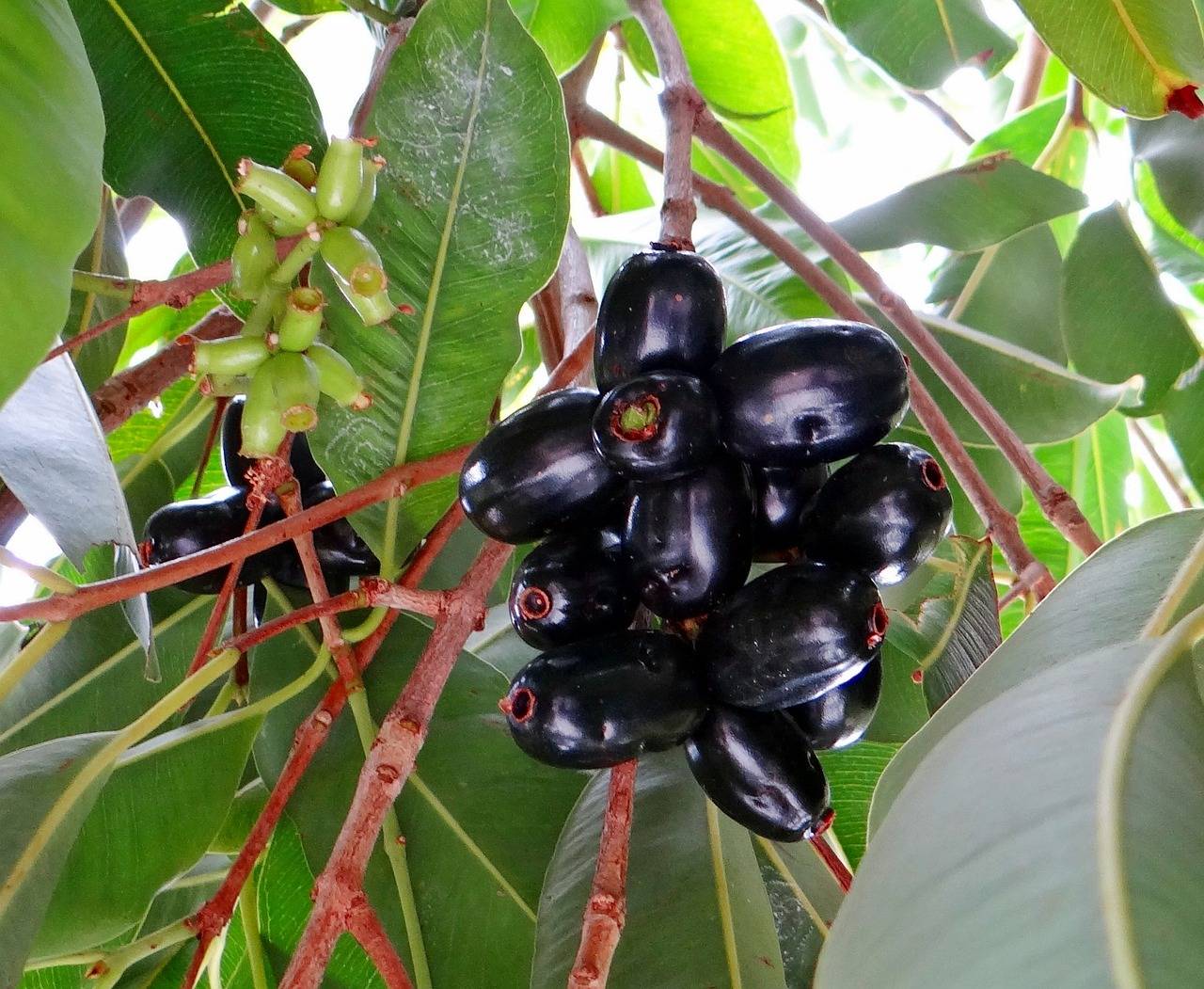
Jamun, also known as black plum or Indian black cherry, holds significant cultural and medicinal importance in India. It is revered in Ayurvedic medicine and cherished for its potential benefits, particularly for diabetic patients. It is abundantly found in Gujarat along with other states such as Rajasthan, Karnataka, Madhya Pradesh, Chhattisgarh, Tamil Nadu, Maharashtra, Haryana, Punjab, Uttar Pradesh, and Andhra Pradesh. Despite its popularity, organized cultivation of jamun faces challenges due to limited information on cultivation practices and the availability of high-yielding varieties.
Climate and Soil
-
Jamun prefers tropical and subtropical climates, thriving in regions up to 1,300 meters in the Himalayas.
-
Dry weather during flowering and fruit setting is ideal, though early rains in subtropical areas aid fruit ripening, enhancing size, color, and flavor.
-
Jamun thrives in a wide range of soils but performs best in deep loam that is well-drained. These soils retain adequate moisture, crucial for optimal growth and fruiting.
-
While jamun can tolerate saline and waterlogged conditions, heavy or sandy soils are less favorable.
Species and Varieties
Jamun belongs to the genus Syzygium within the family Myrtaceae. It includes various species like S. jambos, S. zeylanica, and S. malaccensis, each with distinctive fruit characteristics. The commonly cultivated variety in North India is "Ram Jamun," known for its large, sweet, and juicy fruits.
Propagation
-
Jamun is propagated through seeds, though vegetative methods like budding are preferred for quicker fruiting.
-
Seeds exhibit polyembryony, ensuring progeny resemblance to the parent.
-
Budding, inarching, and air layering are also practiced for propagation, each method suited to specific conditions and objectives.
Planting
-
Jamun trees are planted in pits filled with a mixture of topsoil and organic compost.
-
Planting is recommended during the monsoon to facilitate establishment and minimize stress during hot, dry periods.
Fertilizer Application
While jamun trees are resilient and often grow without much fertilization, a balanced application of farmyard manure benefits growth and fruit production. Careful monitoring prevents excessive vegetative growth, ensuring timely fruiting.
Irrigation
-
Young jamun trees require frequent irrigation until established, after which water needs can be reduced.
-
Timing irrigation to coincide with fruit ripening stages enhances fruit quality and minimizes water usage during dormant periods.
Intercropping
In the initial years, intercropping with legumes or vegetables optimizes land use and supports orchard income. Proper management ensures minimal competition and enhances overall productivity.
Training and Pruning
-
Minimal pruning is required initially, focusing on removing dead or crossing branches.
-
Training involves developing a balanced branch framework to support fruit-bearing and tree longevity.
Insect Pests
Jamun trees are susceptible to pests like white flies and leaf-eating caterpillars, which can be controlled through cultural practices and targeted insecticide applications.
-
White fly (Dialeurodes eugenia): Maintain sanitary conditions, remove affected fruits, and soil treatment.
-
Leaf eating caterpillar (Carea subtillis): Control with insecticide sprays like Rogor or Malathion.
Diseases
Anthracnose, caused by the fungus Glomerella cingulata, poses a significant threat to jamun crops. Timely fungicidal sprays like Dithane Z-78 or Bordeaux mixture, mitigate disease spread and preserve fruit quality.
Flowering and Fruiting
Jamun trees exhibit cross-pollination facilitated by insects like bees and flies. Understanding flowering patterns and optimal pollination conditions enhances fruit set and overall yield.
Harvesting and Yield
-
Commercial harvesting of jamun starts around 8 to 10 years for seedlings and 6 to 7 years for grafted trees.
-
Ripe fruits are handpicked to avoid damage and deterioration, ensuring market-ready quality.
Storage and Marketing
-
Due to its perishable nature, jamun fruits are stored briefly under controlled conditions.
-
Proper packaging and transportation preserve fruit quality, crucial for local and regional markets.
Uses and Composition
-
Jamun fruits are valued for their nutritional content, including minerals, sugars, and iron.
-
Apart from fresh consumption, they are used in beverages, jams, and medicinal preparations.
-
Jamun seeds have therapeutic properties, particularly in managing diabetes and digestive disorders.
















